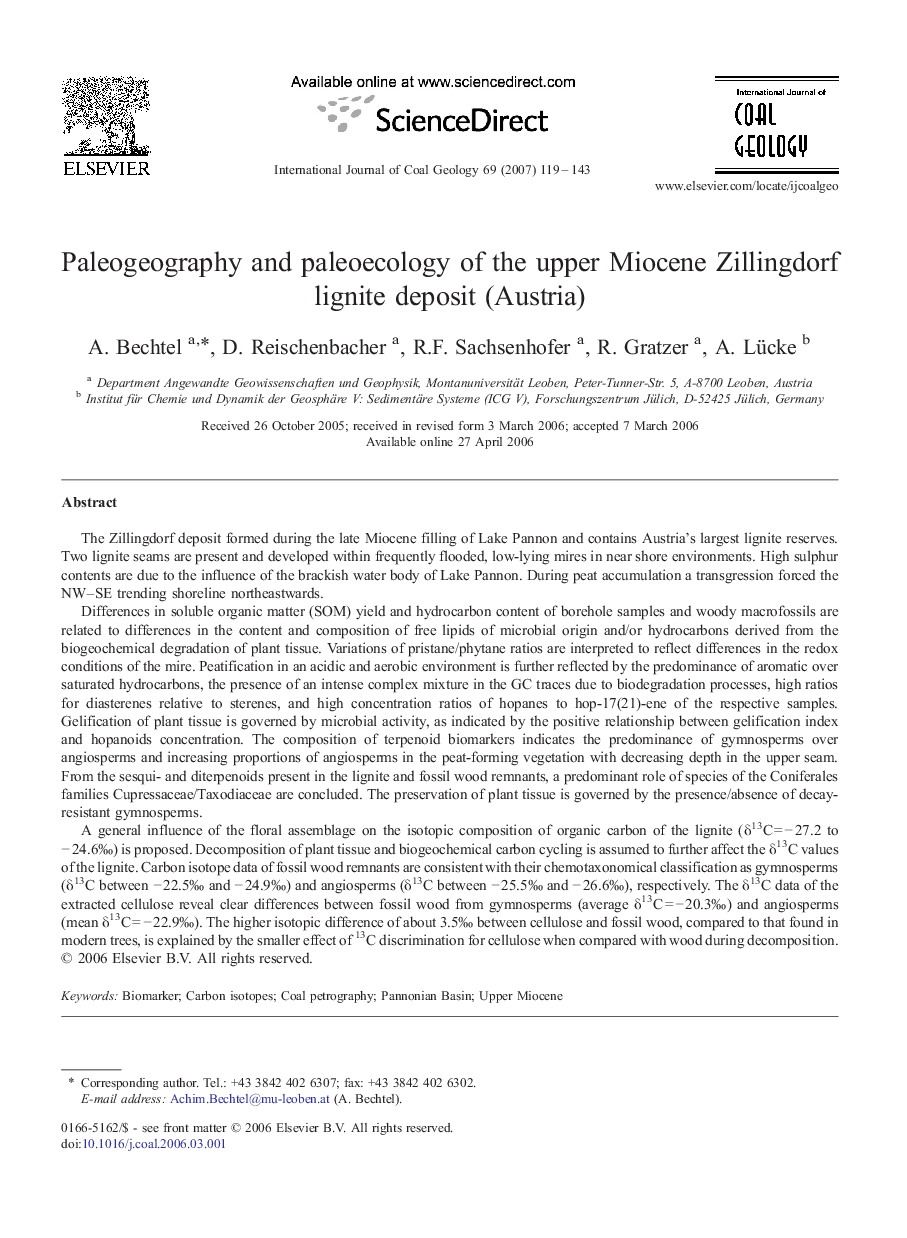| کد مقاله | کد نشریه | سال انتشار | مقاله انگلیسی | نسخه تمام متن |
|---|---|---|---|---|
| 1754405 | 1522662 | 2007 | 25 صفحه PDF | دانلود رایگان |

The Zillingdorf deposit formed during the late Miocene filling of Lake Pannon and contains Austria's largest lignite reserves. Two lignite seams are present and developed within frequently flooded, low-lying mires in near shore environments. High sulphur contents are due to the influence of the brackish water body of Lake Pannon. During peat accumulation a transgression forced the NW–SE trending shoreline northeastwards.Differences in soluble organic matter (SOM) yield and hydrocarbon content of borehole samples and woody macrofossils are related to differences in the content and composition of free lipids of microbial origin and/or hydrocarbons derived from the biogeochemical degradation of plant tissue. Variations of pristane/phytane ratios are interpreted to reflect differences in the redox conditions of the mire. Peatification in an acidic and aerobic environment is further reflected by the predominance of aromatic over saturated hydrocarbons, the presence of an intense complex mixture in the GC traces due to biodegradation processes, high ratios for diasterenes relative to sterenes, and high concentration ratios of hopanes to hop-17(21)-ene of the respective samples. Gelification of plant tissue is governed by microbial activity, as indicated by the positive relationship between gelification index and hopanoids concentration. The composition of terpenoid biomarkers indicates the predominance of gymnosperms over angiosperms and increasing proportions of angiosperms in the peat-forming vegetation with decreasing depth in the upper seam. From the sesqui- and diterpenoids present in the lignite and fossil wood remnants, a predominant role of species of the Coniferales families Cupressaceae/Taxodiaceae are concluded. The preservation of plant tissue is governed by the presence/absence of decay-resistant gymnosperms.A general influence of the floral assemblage on the isotopic composition of organic carbon of the lignite (δ13C = − 27.2 to − 24.6‰) is proposed. Decomposition of plant tissue and biogeochemical carbon cycling is assumed to further affect the δ13C values of the lignite. Carbon isotope data of fossil wood remnants are consistent with their chemotaxonomical classification as gymnosperms (δ13C between − 22.5‰ and − 24.9‰) and angiosperms (δ13C between − 25.5‰ and − 26.6‰), respectively. The δ13C data of the extracted cellulose reveal clear differences between fossil wood from gymnosperms (average δ13C = − 20.3‰) and angiosperms (mean δ13C = − 22.9‰). The higher isotopic difference of about 3.5‰ between cellulose and fossil wood, compared to that found in modern trees, is explained by the smaller effect of 13C discrimination for cellulose when compared with wood during decomposition.
Journal: International Journal of Coal Geology - Volume 69, Issue 3, 1 February 2007, Pages 119–143